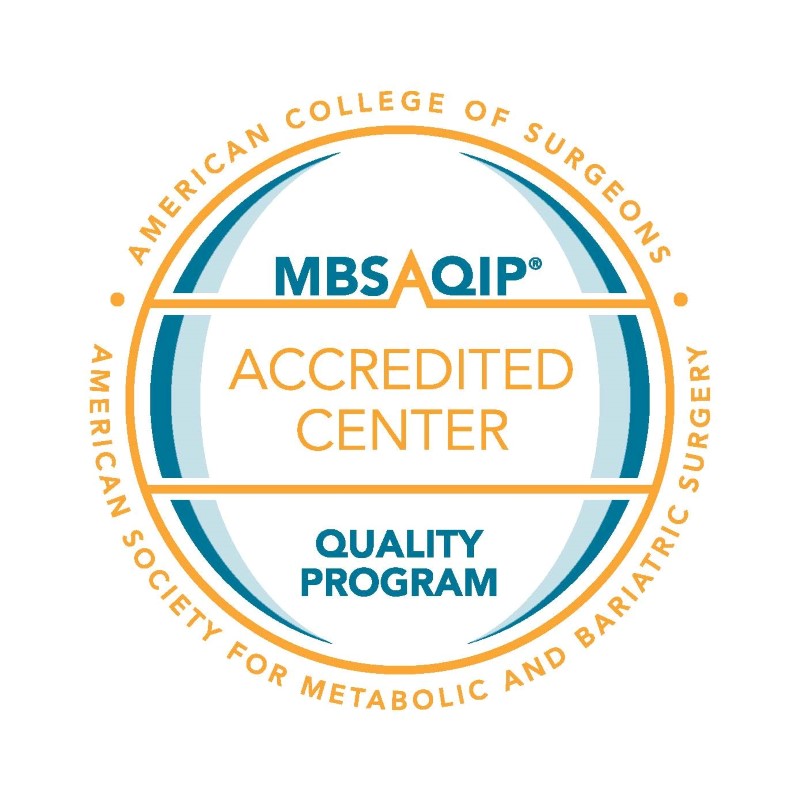Eastern Connecticut Health Network’s Center For Weight Loss Achieves National Accreditation

Eastern Connecticut Health Network’s Center for Weight Loss meets all criteria as a Comprehensive Center according to national quality standards established to deliver safe, high quality bariatric patient care.
Patients seeking surgical treatment for severe obesity and its related conditions have a high-quality choice for receiving treatment at a nationally accredited program that meets the highest standards for patient safety and quality of care in eastern Connecticut.
Dr. Mark Tousignant, Bariatric Surgeon at Eastern Connecticut Health Network‘s (ECHN) Manchester Memorial Hospital, announced its bariatric surgical center has been accredited as a Comprehensive Center under the Metabolic and Bariatric Surgery Accreditation and Quality Improvement Program (MBSAQIP®), a joint program of the American College of Surgeons (ACS) and the American Society for Metabolic and Bariatric Surgery (ASMB).
The MBSAQIP standards ensure that bariatric surgical patients receive a multi-disciplinary program, not just a surgical procedure, which improves patient outcomes and long-term success. ECHN’s accredited center offers preoperative and postoperative care designed specifically for severely obese patients and includes counseling, nutrition support, physical therapy and support groups.
“It is a great honor to receive national recognition for the ECHN Center for Weight Loss. Accreditation of our center validates our mission at ECHN to provide high-quality care, improve the well-being of our community and outcomes for our patients.” said Dr. Tousignant. “ECHN’s Center for Weight Loss’ commitment to quality care begins with skilled and experienced clinicians who seek continuous improvement to enhance the structure, process and patient outcomes of the center.”
To earn the MBSAQIP designation, ECHN’s Center for Weight Loss met essential criteria for staffing, training and facility infrastructure and protocols for care, ensuring its ability to support patients with severe obesity. The center also participates in a national data registry that yields semi-annual reports on the quality of its processes and outcomes, identifying opportunities for continuous quality improvement. The standards are specified in the MBSAQIP Resources for Optimal Care of the Metabolic and Bariatric Surgery Patient 2016, published by the ACS and ASMBS.
“Bariatric surgery can result in long-term weight loss and significant reductions in cardiac and other risk factors for some severely obese adults, thereby significantly improving the health and well-being of the patient.” said Michael Collins, ECHN’s CEO. “ECHN has established a comprehensive program in our community that ensures a comfortable environment, with ease of access for patients who seek the benefits of bariatric surgery.”
After submitting an application, centers seeking MBSAQIP accreditation undergo an extensive site visit by an experienced bariatric surgeon, who reviews the center’s structure, process, and clinical outcomes data. Centers are awarded a specific designation depending on how many patients it serves annually, the type of procedures it provides, and whether it provides care for patients under age 18.
In the United States, around 15.5 million people suffer from severe obesity, according to the National Institutes of Health, and the numbers continue to increase. Obesity increases the risks of morbidity and mortality because of the diseases and conditions that are commonly associated with it, such as type II diabetes, hypertension, and cardiovascular disease, among other health risks. Metabolic and bariatric surgical procedures have proven to be effective in the reduction of co-morbid conditions related to severe obesity.*
Working with ASMBS, the ACS expanded this quality program for bariatric surgery centers so that it can assist bariatric patients in identifying those centers that provide optimal surgical care.
*Buchwald H, Avidor Y, Braunwald E, et al. Bariatric Surgery: A Systematic Review and Meta-analysis. JAMA. 2004;292(14):1724-1737. DOI:10.1001/jama.292.14.1724.
